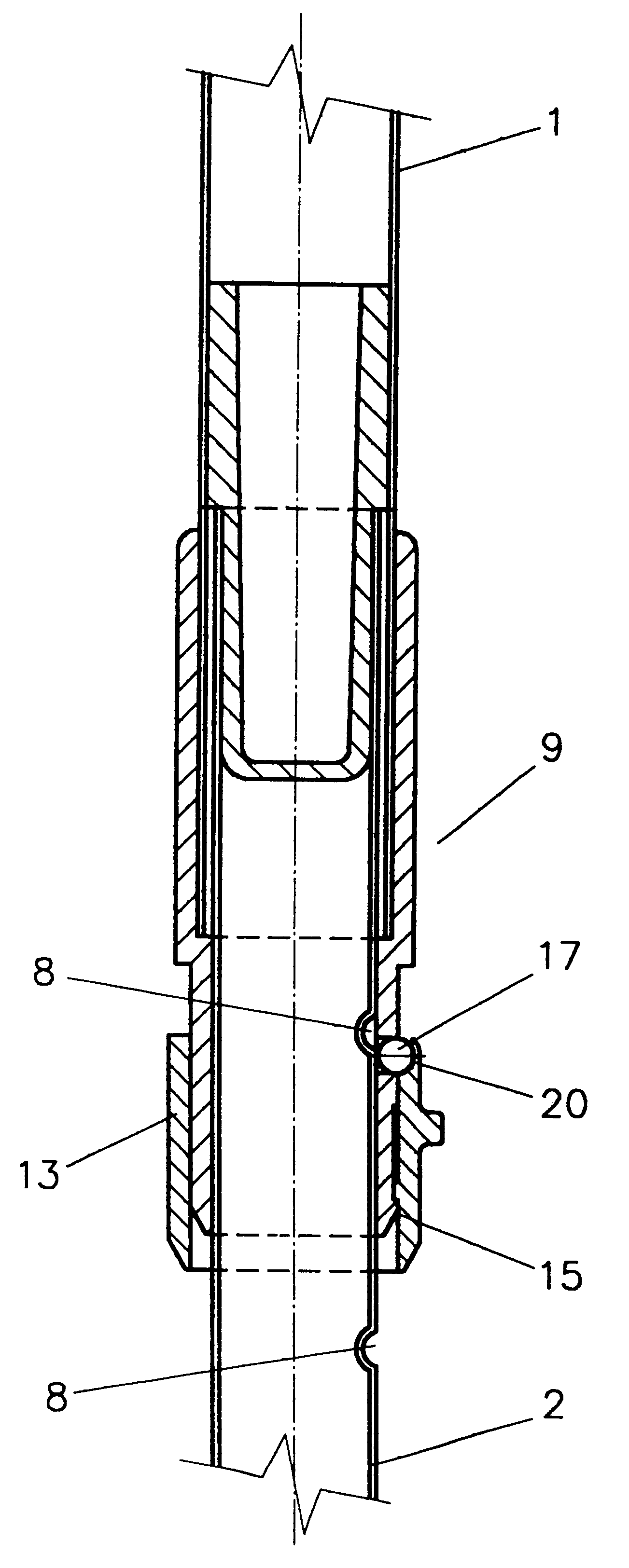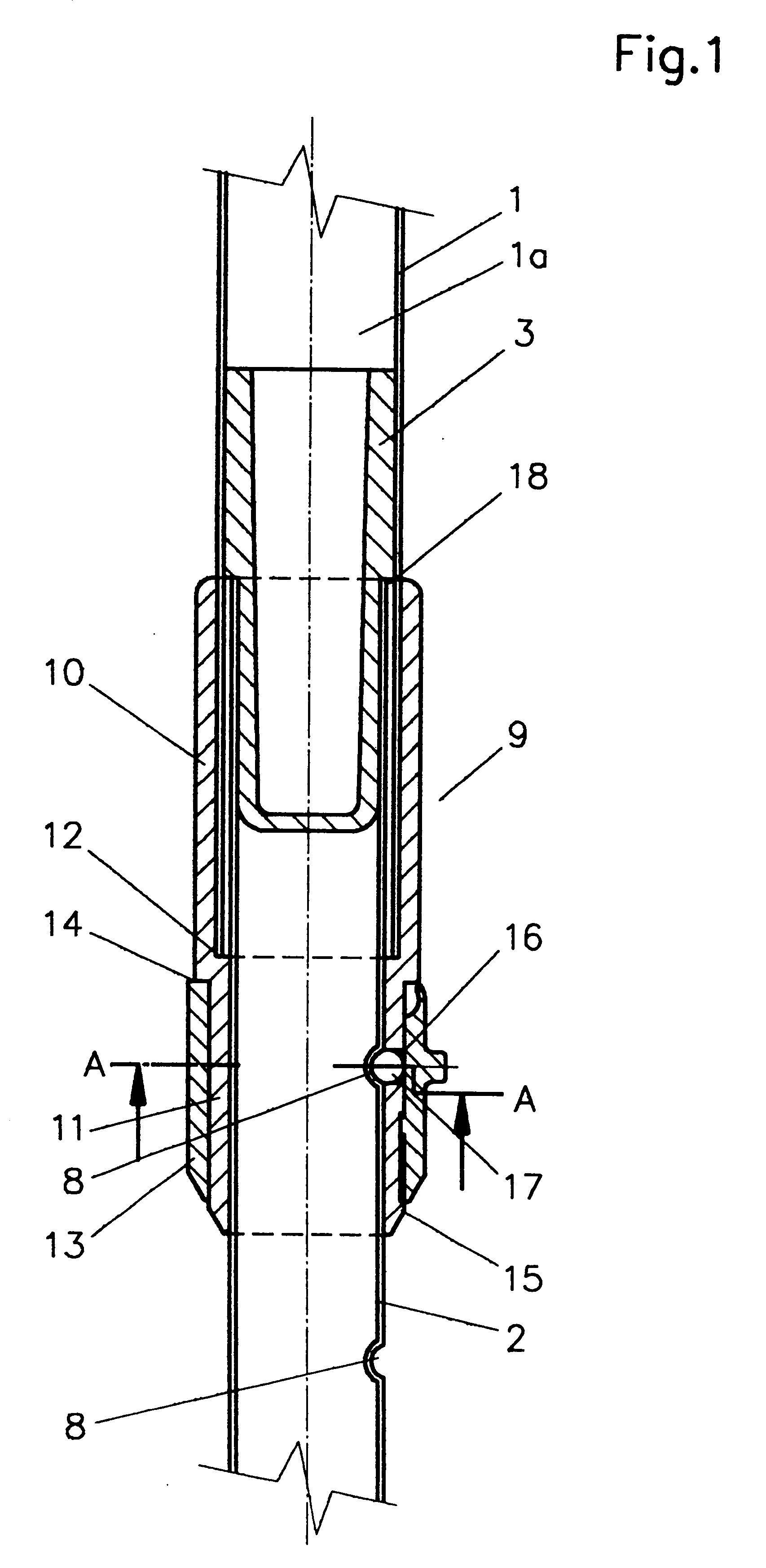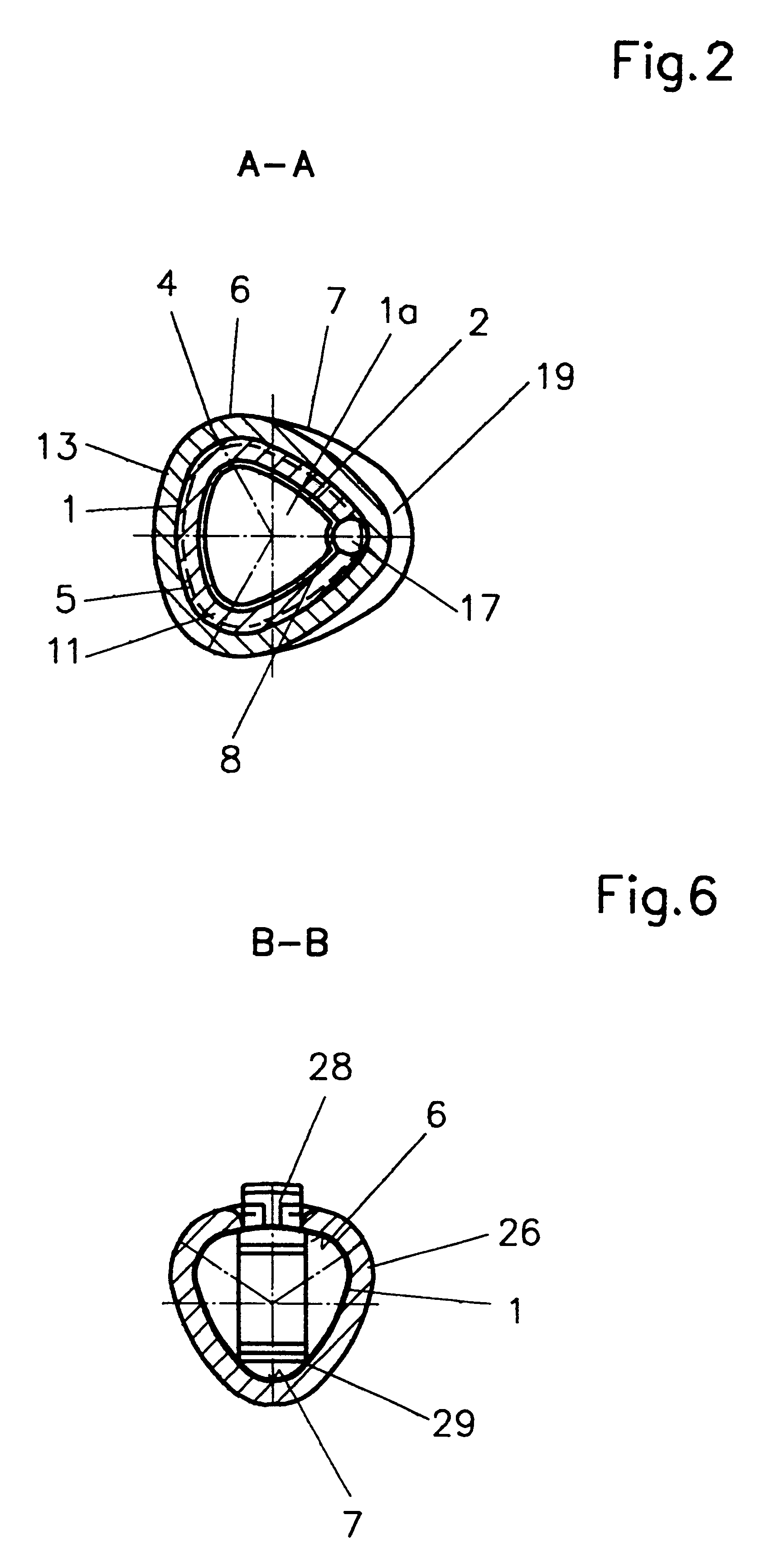Handle for household utensils
a technology for household appliances and handles, applied in the field of handles for household appliances, can solve the problems of user's hands being blistered, and achieve the effects of enhancing friction, enhancing friction, and length of the handle to be changed
- Summary
- Abstract
- Description
- Claims
- Application Information
AI Technical Summary
Benefits of technology
Problems solved by technology
Method used
Image
Examples
Embodiment Construction
In FIG. 1, a telescoping handle of metal is represented, comprising a guide tube 1 and a telescoping tube 2. The telescoping tube 2 projects into a cavity 1a of the guide tube 1 and is guided therein by means of a guide part 3. The guide part 3 is fixed in turn in the hollow telescoping tube 2.
Both the outer contour 4 and the inner contour 5 of the guide tube 1 and of the telescoping tube 2 have the configuration of a polygon having three somewhat concavely curved faces and three very concavely curved edges 7 (FIG. 2).
The telescoping tube 2 is provided at one end 7 with indentations 8 arranged at regular intervals. It is immaterial just where the indentations 8 are located. The indentations 8 cooperate with a fixation device 9 represented in FIG. 1.
The fixation device 9 is placed on the end of the guide tube 1 accommodating the telescoping tube 2, and comprises a first segment 10 snugly enclosing the guide tube, The segment 10 is connected to the guide tube 1 by friction. The segmen...
PUM
 Login to View More
Login to View More Abstract
Description
Claims
Application Information
 Login to View More
Login to View More - R&D
- Intellectual Property
- Life Sciences
- Materials
- Tech Scout
- Unparalleled Data Quality
- Higher Quality Content
- 60% Fewer Hallucinations
Browse by: Latest US Patents, China's latest patents, Technical Efficacy Thesaurus, Application Domain, Technology Topic, Popular Technical Reports.
© 2025 PatSnap. All rights reserved.Legal|Privacy policy|Modern Slavery Act Transparency Statement|Sitemap|About US| Contact US: help@patsnap.com



